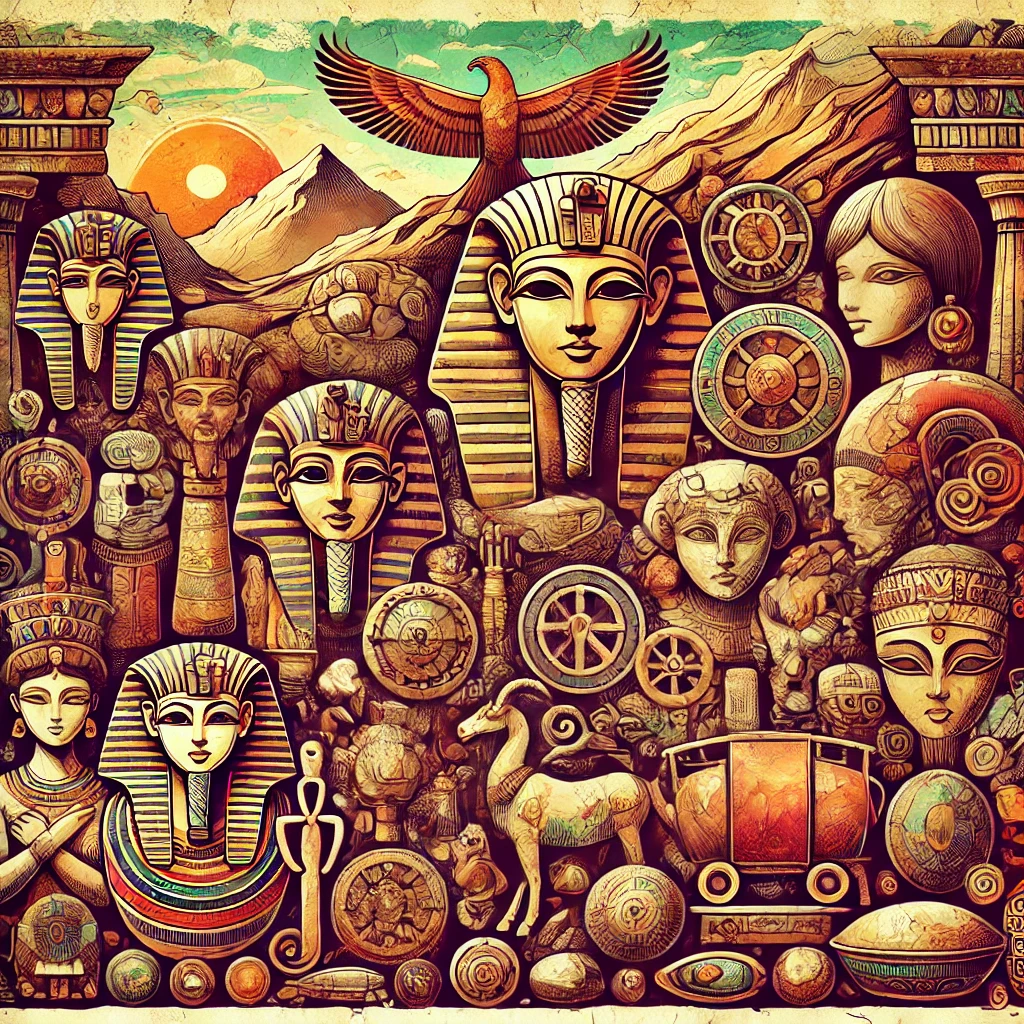Introduction
Ancient Artz represents more than just beautiful objects from the past; it’s a window into the minds and cultures of our ancestors. From the cave paintings of Lascaux to the grand temples of Egypt, ancient art tells a story of humanity’s creativity, beliefs, and daily life. But what exactly makes ancient art so captivating? In this article, we’ll dive into the rich world of ancient artz, exploring its origins, significance, and enduring appeal. Whether you’re an art enthusiast or just curious about human history, this journey through the world of ancient artz is bound to fascinate.
1. The Origins of Ancient Artz
Ancient artz has been around for as long as humans have walked the earth. The earliest examples date back to the Paleolithic era, around 40,000 years ago, when early humans began to decorate their caves with paintings of animals, hunters, and mysterious symbols. These artworks were not just random doodles; they served important roles in rituals, communication, and even education.
- Cave Paintings: The Lascaux Caves in France and the Altamira Cave in Spain are two of the most famous prehistoric sites showcasing the art of our ancient ancestors. These paintings, often depicting wild animals and human figures, give us a glimpse into the life and environment of early humans. The sophistication of these works demonstrates that even in the earliest stages of human history, the desire to create and express was deeply rooted.
- Sculptures and Figurines: Ancient artz isn’t limited to paintings; sculptures like the Venus of Willendorf, a small statuette from around 25,000 years ago, represent the human fascination with form and fertility. These objects are thought to be symbols of beauty, fertility, or religious beliefs, emphasizing the diverse roles that art played in ancient societies.
2. Ancient Artz in Ancient Civilizations
As human societies evolved, so did their art. The ancient civilizations of Egypt, Mesopotamia, Greece, Rome, China, and India created some of the most iconic works in history. Each civilization’s art was a reflection of its values, beliefs, and daily life, providing us with a detailed picture of how these societies functioned.
- Egyptian Art: Egyptian art is instantly recognizable for its iconic hieroglyphs, statues of pharaohs, and monumental structures like the Pyramids of Giza. The art of ancient Egypt was deeply intertwined with their religion and the afterlife, as seen in the elaborate tomb paintings designed to guide the deceased to the afterlife. This connection to the spiritual world made Egyptian art both powerful and enduring, with symbols like the Ankh and Eye of Horus still recognized today.
- Greek Art: Ancient Greek art focused on humanism, the celebration of the human form, and the pursuit of ideal beauty. From the lifelike sculptures of gods and athletes to the intricate pottery, Greek art set the standards for Western art traditions. The Parthenon, with its stunning sculptures and architecture, remains a testament to the artistic and cultural achievements of ancient Greece.
- Chinese Art: Chinese ancient artz spans over thousands of years, with notable examples including the Terracotta Army and intricate jade carvings. Chinese art often centered on nature, spirituality, and harmony, reflecting the philosophical teachings of Confucianism, Taoism, and Buddhism. Calligraphy and painting, especially landscape paintings, were highly regarded forms of expression, emphasizing the importance of balance and beauty.
3. The Purpose of Ancient Artz
Art has always been more than just decoration; it’s a medium for storytelling, religious devotion, and social commentary. Ancient artz served many purposes, often providing insights into what ancient societies valued most.
- Religious and Ritualistic Art: Much of ancient artz was created for religious or ritualistic purposes. Temples, statues of gods, and sacred paintings were not just works of art; they were believed to hold power and were integral to religious practices. For instance, in ancient Egypt, statues of gods were thought to house the spirit of the deity, and elaborate tomb paintings were designed to ensure a safe journey to the afterlife.
- Commemorative Art: Kings, pharaohs, and emperors often commissioned grand works of art to commemorate their achievements. Whether it was a massive statue or a grand mural, these pieces were meant to showcase the ruler’s power and ensure their legacy. The ancient artz of Mesopotamia often depicted kings hunting lions or engaging in battle, emphasizing their strength and divine favor.
- Daily Life and Social Status: Not all ancient artz was grand or religious; many artworks depict scenes of daily life, from farming and feasting to sports and music. These works provide a glimpse into the social structures and cultural practices of the time, highlighting the lives of not just the elite but also common people.
4. Techniques and Materials in Ancient Artz
The methods and materials used in ancient artz were as diverse as the cultures that created them. Artists utilized whatever resources were available, leading to unique regional styles and techniques.
- Stone and Bronze: Sculptures were often carved from stone or cast in bronze, creating durable and impressive works that have stood the test of time. The Greek use of marble for statues and temples exemplifies their pursuit of beauty and precision.
- Paint and Pigments: Ancient artists created vibrant paintings using natural pigments derived from minerals, plants, and even insects. Egyptian artists, for example, used a range of colors like red, blue, and gold, each holding symbolic meaning.
- Pottery and Ceramics: Pottery was not only functional but also an important artistic medium in many ancient cultures. Greek pottery, with its detailed depictions of myths and daily life, serves as both art and historical record.
- Textiles and Weaving: Textiles were highly prized in ancient societies, with complex patterns and techniques used to create clothing, tapestries, and ceremonial items. The ancient artz of weaving, seen in cultures like the Inca and ancient China, highlights the importance of craftsmanship and design.
5. The Influence of Ancient Artz on Modern Art
Ancient artz has left an indelible mark on the art world, influencing countless generations of artists and inspiring modern art movements. From the Renaissance’s revival of classical forms to the incorporation of ancient symbols in contemporary art, the legacy of ancient artz is still visible today.
- Revival and Renaissance: The Renaissance period in Europe was heavily inspired by the art of ancient Greece and Rome. Artists like Michelangelo and Leonardo da Vinci looked to ancient sculptures for inspiration, seeking to capture the ideal human form and balance seen in classical art.
- Modern Interpretations: In modern times, ancient artz continues to inspire artists. Contemporary sculptors, painters, and digital artists often draw on ancient themes, techniques, and symbols, reinterpreting them in new and innovative ways. The timeless appeal of ancient artz lies in its ability to resonate across cultures and eras, reminding us of our shared human heritage.
Conclusion
Ancient Artz is more than just a study of old objects; it’s a journey through time that connects us to the lives, beliefs, and dreams of our ancestors. From the caves of early humans to the grand temples of ancient civilizations, art has always been a vital form of human expression. The enduring appeal of ancient artz lies in its ability to capture the essence of humanity—our fears, our triumphs, and our endless quest for meaning.
As we continue to discover and interpret these ancient works, we gain a deeper understanding of who we are and where we come from. Ancient artz serves as a timeless reminder of the power of creativity and the universal language of art that transcends time and space. Whether you’re admiring a Greek statue or marveling at an Egyptian mural, ancient artz invites you to step into the past and experience the world through the eyes of those who came before us.


